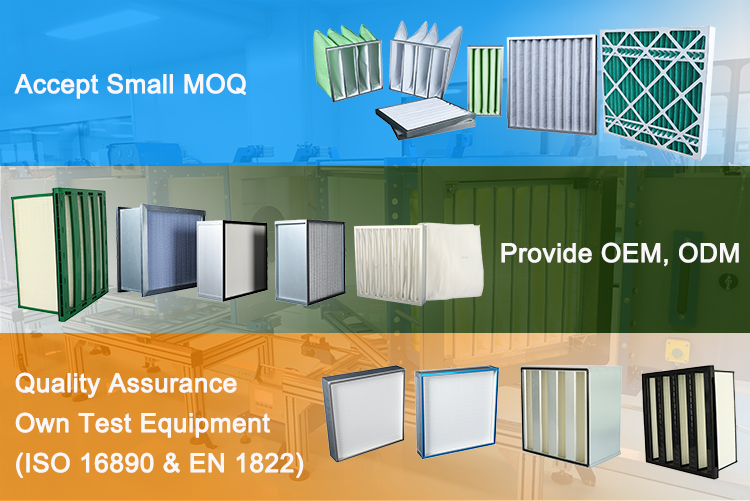 May 23, 2025
May 23, 2025
In any automotive or industrial painting environment, clean air is non-negotiable. Dust, overspray, and airborne particles can easily ruin a high-quality paint job. That’s where paint booth filtration comes in. A well-designed filtration system ensures that the booth stays clean, the finish looks flawless, and harmful contaminants don’t pose health risks.
In this article, we’ll break down how paint booth filters work, the different types of filters available, and how to choose and maintain the right ones for your operation.

Paint booth filtration refers to the air cleaning systems installed in a spray booth to remove particles from the incoming and outgoing air. These systems are essential for:
Protecting the quality of paint finishes
Ensuring a safe environment for workers
Complying with environmental and OSHA regulations
Without proper filtration, paint particles can settle on surfaces, damage equipment, or pollute the air both inside and outside the facility.
1. Improves Paint Finish Quality
Particles in the air can land on wet paint, causing blemishes, fisheyes, or an uneven coat. Filtration systems catch these particles before they reach the paint surface, leading to smoother, more professional finishes.
2. Protects Worker Health
Paint fumes and overspray often contain volatile organic compounds (VOCs), which can be hazardous to workers. Filtration helps remove these pollutants from the air, especially when combined with proper ventilation.
3. Reduces Fire Risk
Many paints are flammable. A buildup of overspray and dust increases the chance of fire or explosion. Filters remove this combustible material from the air.
4. Meets Compliance Standards
Regulations from OSHA, EPA, and local air quality boards require proper air filtration in paint booth operations. Non-compliance can lead to fines or shutdowns.
Paint booths typically use a multi-stage filtration system, which includes:
1. Intake Filters
These filters clean the air entering the booth, ensuring that it’s free from dust and contaminants. Common types include:
Panel filters
Pad filters
Pleated filters
High-quality intake filters are crucial for preparing a clean airflow that won’t compromise the painting process.
2. Exhaust Filters
These remove overspray and fumes from the air before it's expelled outside. Types include:
Paint arrestor filters
Fiberglass exhaust filters
Polyester filters
Bag filters
Some booths may use activated carbon filters to remove odors and VOCs from the exhaust.
3. Ceiling Filters (Diffusion Media)
Installed in downdraft booths, ceiling filters evenly distribute clean air from above. This helps maintain consistent airflow and prevents turbulence, which can disrupt paint application.
When selecting filters, consider the following factors:
✔️ Booth Type
Is it a downdraft, crossdraft, or side-draft booth? Each type has different airflow dynamics and filtration needs.
✔️ Paint Type
Are you using water-based or solvent-based paints? Some filters are more effective for certain chemicals or particles.
✔️ Airflow Rate
Filters must match your system’s CFM (cubic feet per minute) requirements to avoid airflow restrictions.
✔️ Regulatory Requirements
Make sure the filters comply with local EPA, OSHA, and NFPA standards.
✔️ Filter Efficiency
Higher-efficiency filters trap smaller particles, but they may need more frequent replacement or stronger fans.
Filter lifespan depends on:
Booth usage
Type of paint used
Amount of overspray
Air quality in the facility
On average:
Intake filters: Every 3–6 months
Exhaust filters: Every 2–4 weeks
Ceiling filters: Every 6–12 months
Tip: Check filters regularly and replace them when they show signs of clogging, discoloration, or reduced airflow.
1. Perform Routine Inspections – Look for dirt buildup, tears, or airflow drop.
2. Change Filters on Schedule – Don’t wait until there’s a problem.
3. Keep Replacement Filters On-Hand – Avoid downtime by having spares available.
4. Train Staff – Make sure everyone knows how to monitor and replace filters correctly.
5. Log Maintenance – Keep records for compliance and performance tracking.
Dust in the finish
Poor adhesion or peeling paint
Foul odors in the facility
Increased fire risk
Failed inspections or permits
Proper filtration isn’t just about protecting your booth—it’s about protecting your business reputation.
A clean spray booth is the backbone of any professional painting operation. Investing in the right paint booth filtration system ensures your products look their best, your team stays safe, and your business meets all regulatory standards.
Whether you're running a small body shop or a high-volume industrial line, filter quality and maintenance can make or break your operation.

